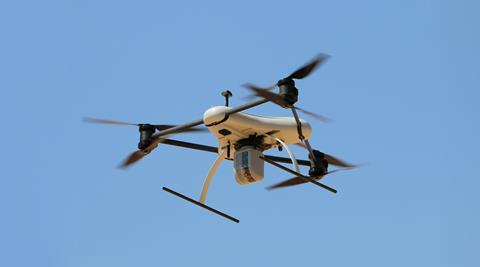Rwampara, Uganda – On Friday morning, a Ugandan news website exclusively reported an unusual plane accident in the Western District of Kasese.
Chimp Reports reported a Uganda Peoples Defence Forces Airforce (UPDFAF) spy plane had crashed in the Ugandan district of Kasese the previous evening.
The surveillance plane had two pilots on board who escaped unharmed.
According to Chimp Reports, the crash has since affected the reconnaissance capabilities of the UPDF in the Eastern Democratic Republic of Congo (DRC) in their fight against the Allied Democratic Forces (ADF) militants.
ADF Threats:
Remnants of this militant group have been causing insecurity in the region, including the killing of a tourist couple and their guide in the lush and expansive Queen Elizabeth National Park in November.
It is reported that the crashed UPDF Diamond aircraft was critical in locating ADF bases, equipped with multi-functional aerial sensors.
Although an anonymous defense official quoted was quoted by Chimp Reports saying the crash undermines their ability to gather intelligence in the Eastern DRC, the Ugandan airforce boasts a few similar assets still in action.

Command Issues:
While the Ugandan website quotes observers who have blamed poor leadership for the crash, pointing out that junior officers are often ordered to deploy these aircraft, which end up crashing, questions are being asked as to why the country loses such a strategic asset amid a critical and successful aerial campaign against ADF bases in Eastern DRC.
Using multiple sources, our TOP INTELLIGENCE Desk investigates possible causes and reports as follows;
Operation Shujaa and the Bumpy Kasese Airfield
On November 16, 2021, three suicide bombers detonated vests in Kampala, killing at least four and injuring 37 near the Ugandan parliament and police headquarters.
The Ugandan government attributed the attack to the Allied Democratic Forces (ADF), a terrorist rebel group that has built up bases in the Democratic Republic of Congo since 1996.
The Islamic State (IS) claimed responsibility, with ADF pledging allegiance in 2019.
President Yoweri Museveni declared retaliation, leading to joint airstrikes by Ugandan and Congolese armies in a military campaign code-named Operation Shujaa. Limited information surfaced, but President Museveni hailed it as a total success.

For two years now, the operation has led to the recovery of over 9000 rounds of ammunition, several weapons, rescued abductees, and significant destruction of the ADF bases.
The army has been relying on reconnaissance efforts of aircraft that have the capabilities to locate the enemy and send coordinates to the fighter jets at the airforce bases in Entebbe and Nakasongola in central Uganda.
While this total success is largely attributed to Uganda’s increasingly lethal airpower, military sources tell Mediscape News that after several many months into the operation, senior pilots complained to the leadership about the unsuitability of the Kasese airfield for the safe landing of aircraft. The sources say the airfield runway was reported to be bumpy and unsafe for landing.
These reports were made promptly to the army leadership with recommendations that the military aircraft would rather use the army bases in Entebbe and Nakasongola, in Central Uganda.
“In such missions, there’s what is called a brief and a debrief. The information obtained from this process is usually very vital in determining how the next missions should be handled. This is the standard and it should be maintained,” says an aviation expert with military experience who preferred to remain anonymous to speak freely.
Despite these early warnings, our sources tell us that a new cohort of pilots, probably excited about flying and accumulating flight hours, have insisted on using this airfield to conduct operations in the DRC. Yet, its runway is deemed not suitable enough for aircraft safety.
From these reports, the sources add, the pilot who got involved in the Thursday incident was not supposed to land at Kasese and indeed, a senior airforce commander is said to have asked how the aircraft ended up landing there in the first place.
This coupled with what looks like pilot neglect of safety information is what Investigators into the crush are reportedly following.
Sources add that while the mission was official, the person who gave the order to land at the bumpy airstrip might have some questions to answer.
Was a naughty Uganda Kob to blame?
The Kasese Airstrip is right in the environs of the expansive Queen Elizabeth National Park known for its massive collection of Uganda Kobs, among other animal species. After its reconnaissance mission in DRC, the spy plane is reported to have landed safely at the airstrip with a pilot and his co-pilot.

While we could not establish why they chose to land at the airstrip, we gather that after a few minutes, the two pilots decided to fly back to base.
As the plane was taxiing on the bumpy runway with high force, eyewitnesses tell us that a naughty Uganda Kob was also attempting to cross at a distance ahead, leaving the pilot with no choice and option to dodge it.
“This could explain why the aircraft looks extensively damaged,” the expert tells us.
Will the incident hamper Operation Shujaa Efforts?
Military sources tell us the nation has three more aircraft that will continue carrying out missions to support the UPDF mission in DRC.
“While it may have temporarily hampered these efforts, the effect will not be significant enough to destabilize the mission,” another military source has told us.
These aircrafts, such as this Australian-made DA42, are highly capable machines with intelligence, reconnaissance, and surveillance capabilities.
When President Yoweri Museveni keeps reporting about how the army’s airpower has destroyed the ADF bases in DRC, he knows it’s all about these pieces and more.
The aircraft is capable of eagle-eye spotting targets from a distance and relaying detailed coordinates to the ground for precision airstrikes on enemy targets. They have been very active in trouble spots such as DRC, South Sudan, and Somalia.
Aircrash Incidents in Uganda
This incident adds to the growing number of aircraft crashes that the UPDF has experienced in recent years. Concerns have also been raised about the management of the military’s aviation assets as the history of aircraft crashes in the UPDF continues to be a cause for concern.

In September 2022, a UPDF helicopter crashed in the eastern DRC, resulting in the death of 22 soldiers. Other crashes include a helicopter in Karamoja sub-region in July and two Mi-24 helicopters in Fort Portal and Mityana in the past year.
Several other accidents have occurred, resulting in fatalities, including a jet ranger crash in Somalia.
Over the past five years, the UPDF has acquired modern aviation assets, including a Diamond DA 42 from Austria, Mi-24/Mi-35P combat helicopters from Belarus, and UH-1H Huey II helicopters from the United States.
However, inadequate adherence to safety protocols has raised concerns and questions about the UPDF’s ability to effectively operate and maintain these aircraft.
Thus, the crashes have not only resulted in the loss of valuable military assets but also the loss of lives.
The government’s lack of transparency in releasing reports on these accidents adds to the frustration and concerns surrounding the UPDF’s aviation operations.
The military’s top brass must address these issues and take necessary steps to ensure the safety and efficiency of their aviation assets.
On Thursday, the Defence spokesperson, Brig Felix Kulayigye, said he was unaware of the accident but promised to investigate.
About The Author
Arinaitwe Rugyendo
Rugyendo is the Founder and Editor-in-Chief of ResearchFinds News. He’s an accomplished journalist with a rich background in the media industry in Uganda. With over two decades of experience, Rugyendo has held various roles including cab reporter, Bureau Chief, Managing Editor, and Digital Media Editor at renowned publications such as Daily Monitor and Red Pepper. Throughout his career, he has demonstrated a commitment to delivering high-quality journalism and staying at the forefront of media trends. In addition to his journalistic pursuits, Rugyendo is currently pursuing a Ph.D. in Journalism and Communication at Makerere University. He has been recognized for his outstanding leadership and commitment to social change as a Desmond Tutu Fellow and Crans Montana New Leader. Rugyendo also serves as the Chairman of Young Engineers Uganda and Uganda Premier League, showcasing his dedication to promoting excellence and growth in various fields. With a passion for driving innovation and pushing boundaries in media, Rugyendo continues to make significant contributions to the industry. His vast experience, academic pursuits, and leadership roles make him a respected figure in the Ugandan media landscape.

















